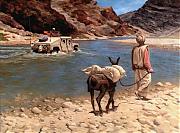This is the first post in a multi-part series about the design and application of "smart power".
Counterinsurgency, much like international relations, is about the right amount of power in just the right places. However, in the macro scheme of international relations, there is room for fudging and fine grain controls aren't as necessary. Counterinsurgency requires, as I see it, requires greater finesse to be successful.
Bridging the ideas of hard power (generally kinetic use of force) with soft power (non-coercive persuasion), we arrive at the somewhat new and fashionable term Smart Power (side note: see the
Smart Power Blog for one of the few overt discussions on the topic under the banner "smart power"). To counterinsurgency, this isn't new.
Up until a few years ago, conventional wisdom still held that winning wars against non-state actors could be calibrated by looking at the elements of national power. State opponents didn't necessarily need all of the pressures brought to bear as since the 19th Century, victory could be achieved by capturing the capital city. Non-state actors, however, didn't often have such a convenient defined geo-political heart and so we looked at the broader spectrum of our elements of power that could be brought to bear. Originally this was DIME (diplomacy, information, military, and economics), somewhat recently it was expanded to the awkward acronym MIDLIFE (military, information, diplomacy, law enforcement, intelligence, finance, and economics)
However, this emphasized our powers and our perceptions of their importance without considering the pressure points of our opponents. Recently we this has started to manifest itself in questions about whether there are different engines of insurgencies ("Maoist" versus "Religious") and how we might craft different responses.
The Equalizer graphic above is one way I submit we can look at the application of power (clearly the idea came to me after using my iTunes equalizer...) against insurgencies. Let me give a quick walk-through before continuing...








Bookmarks